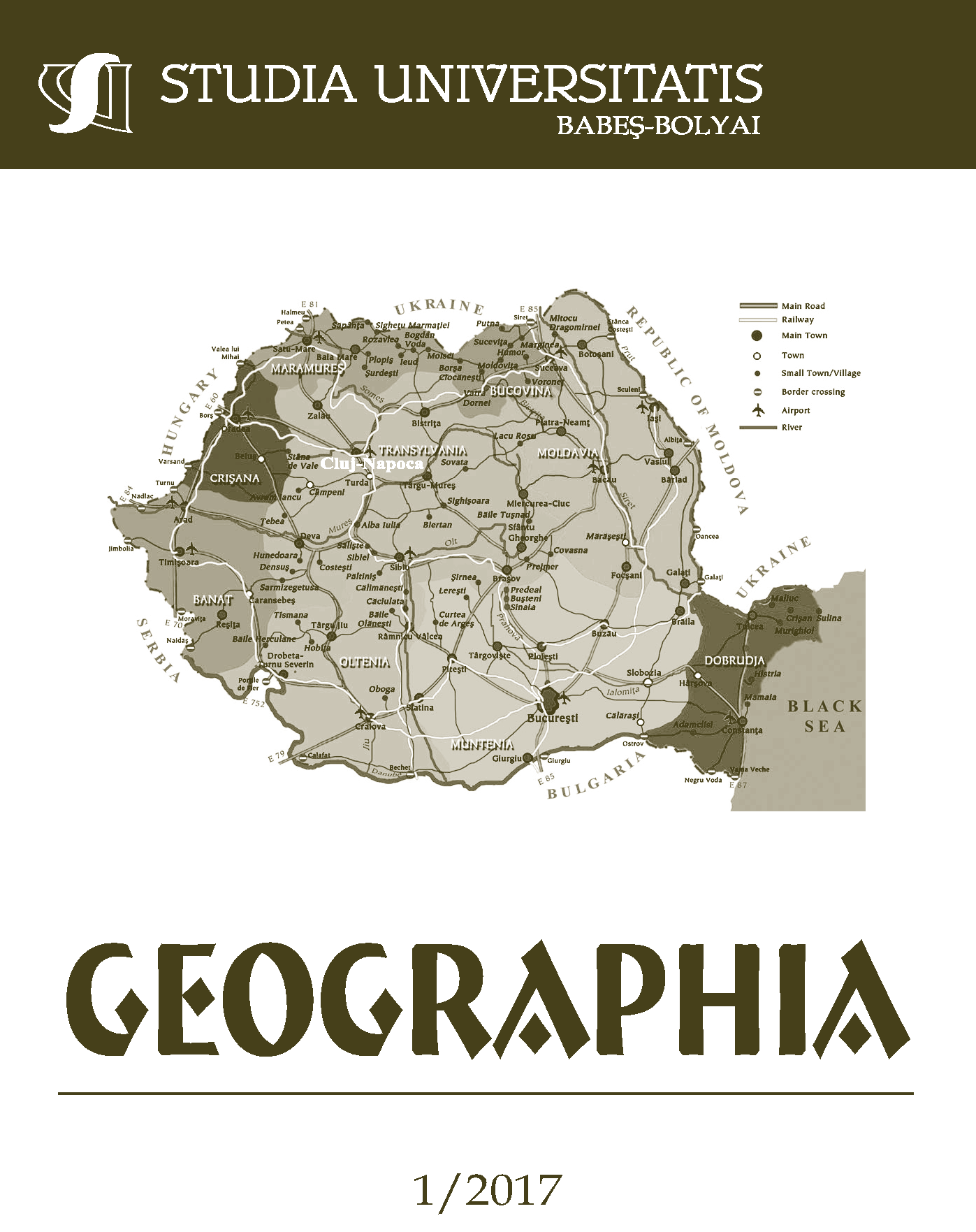URBANIZATION PROCESSES IN THE KYRGYZ REPUBLIC. CASE STUDY: THE CITY OF BISHKEK
DOI:
https://doi.org/10.24193/subbgeogr.2017.1.06Keywords:
urbanization, sustainable development, agglomeration, unplanned urbanization, cities satellites planAbstract
In the Kyrgyz Republic the urban population is 34% and on its territory there are 31 cities at different levels. About 60% of the urban population lives in two cities - Bishkek (the capital) and Osh. At present, the urban population is about 1,987,000 inhabitants. The main specificity is that urbanization processes develop in a mountain territorial location. Urban areas are mostly located in valleys and low mountain areas, with the exception of some urban systems, which are located in the middle part. An important task at the moment is to find a solution for the socio-economic problems of small towns. In this regard, there is need for an integrated treatment of the inevitable new residential policy - shaping Bishkek agglomeration with surrounding satellite cities.References
Centre of Economic Research – CER (2010). Improving City Management System in Small and Medium Cities of Uzbekistan – Main Trends, Mechanisms and Instruments, Analytical Report 2010/04, United Nations Economic and Social Commission for Asia and the Pacific – UNESCAP, Tashkent.
Centre of Economic Research – CER (2013). Urbanization in Central Asia: Challenges, Issues and Prospects. Analytical Report, United Nations Economic and Social Commission for Asia and the Pacific – UNESCAP, Tashkent, 70 p.
Dyldaev, M. M., Bokonbaev, K. J. (2008). Environmental problems of the city of Bishkek. Monograph, Bishkek, 124 p.
Gibbs, J. (1963). The evolution of the population concentration, Economic Geography, 39, 119-129.
Lappo, G. M. (1997). Geografiya Gorodov, Edit. VLADOS, Moscow, 478 p.
Lucy, W.H. (1994). If planning includes too much, maybe it should include more, Journal of the American Planning Association, no. 60, 3, pp. 305 - 318.
MacRoberts, M. H., MacRoberts, Barbara (1989). Problems of citation analysis: A critical review. Journal of the American Society for Information Science, 1989, no. 40, 5, pp. 342 - 349.
NISI (2015). Concept formation and development of the Bishkek agglomeration. Report, Bishkek, 35 p.
Office of Management and Budget (2013). Revised Delineations of Metropolitan Statistical Areas, Micropolitan Statistical Areas, and Combined Statistical Areas, and Guidance on Uses of the Delineations of These Areas, Bulletin No. 13-01 (February 28, 2013), с. 2, US Department of Labor, Washington DC.
Pertsik, E. N. (1991). Geografiya Gorodov (Geourbanistika), Vysshaya Shkola, 45 p.
Stiftel, B., Mogg Rebecca (2007). A planner’s guide to the digital bibliographic revolution, Journal of the American Planning Association, no. 73, 1, pp. 68 – 85.
The Law of the Kyrgyz Republic (2008). On administrative-territorial structure of the Kyrgyz Republic, issued on April 25, 2008, No. 65, Bishkek.
The National Statistical Committee of the Kyrgyz Republic (2014). Annual Report, Bishkek, 129 p.
United Nations (2011). World Population Prospects: The 2010 Revision, UNDESA Population Division, New York.
USSR Statistics Committee (1987). National Economy of the USSR in 70 years: Anniversary Statistical Yearbook, Finance and Statistics, Moscow.
World Bank (2013). Planning, Connecting, and Financing Cities – Now: Priorities for City Leaders, World Bank, Washington DC.
Downloads
Published
How to Cite
Issue
Section
License
Copyright (c) 2017 Studia Universitatis Babeș-Bolyai Geographia

This work is licensed under a Creative Commons Attribution-NonCommercial-NoDerivatives 4.0 International License.





 ©Studia Universitatis Babeş-Bolyai Geographia. Published by Babeș-Bolyai University.
©Studia Universitatis Babeş-Bolyai Geographia. Published by Babeș-Bolyai University.